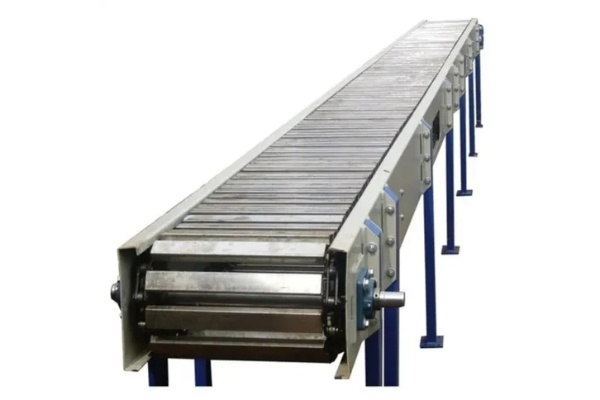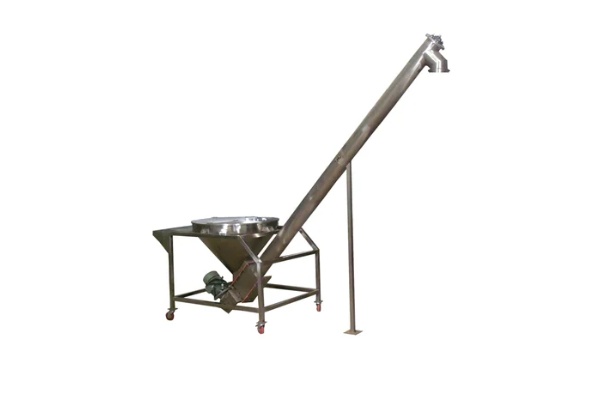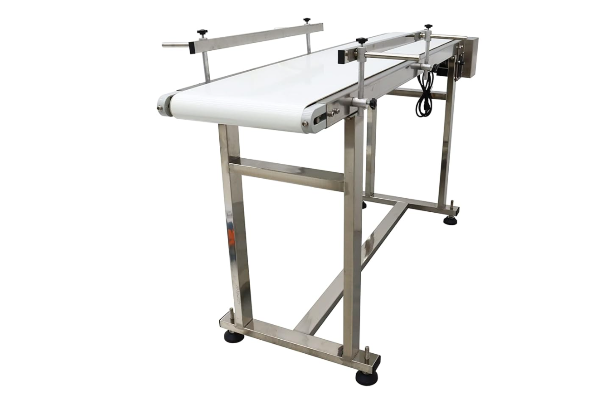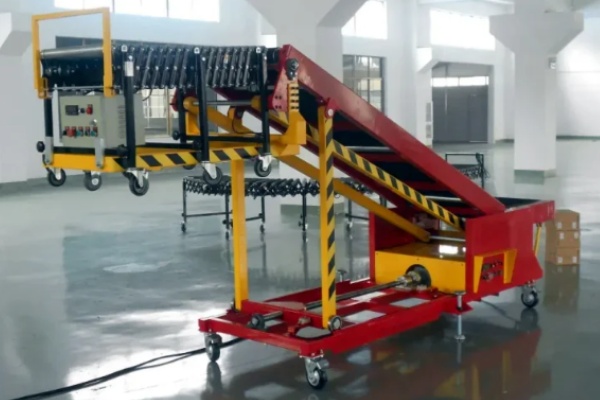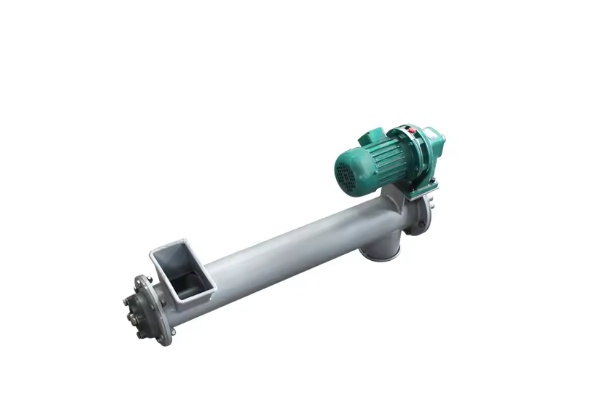
Poultry Screw Conveyor
The price of a Poultry Screw Conveyor varies from $290 to $4,500 depending on factors such as type, length, conveying capacity, material, and brand.
Voltage: 220V, 380V
Power: 1kW, 2KW, 3KW, 5KW
Productivity: 500L/hour
Size: 1500mm L * 200mmW/customized
Rotation speed: 45-70 R/Min
Material: Stainless steel/Carbon steel
What is Poultry Screw Conveyor?
Poultry Screw Conveyor is mainly used to mechanically transfer various types of bulk materials within the farm or in related processing links. Poultry Screw Conveyor can be divided into many types, including shaft screw conveyors and flexible screw conveyors. Different types are suitable for material characteristics and conveying requirements in different scenarios. The processing capacity of these devices varies depending on the model and design, and can meet different needs from small-scale farming to large-scale intensive production. At the same time, the conveying distances they can achieve are also different. There are both short-distance point-to-point transmission and system configurations that can cover longer distances, providing a basic material transfer solution for farming production.
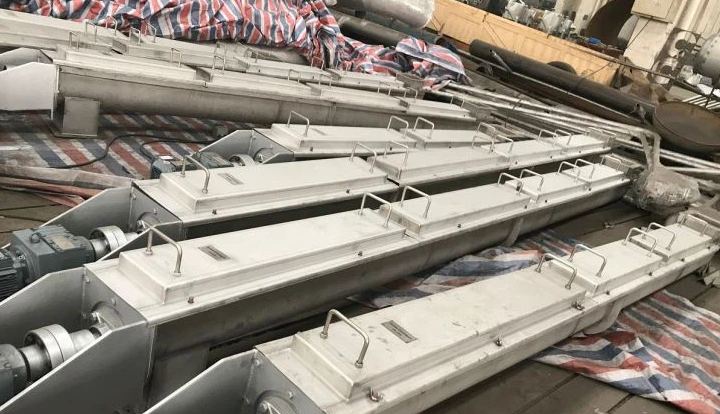
What are the types of Poultry Screw Conveyor?
Poultry Screw Conveyor is mainly used to transport feed. According to its structure and working principle, it can be divided into shaft, shaftless, tubular, inclined, etc. The following are several common types:
Shafted Screw ConveyorStructural features: It consists of a central shaft with spiral blades, the spiral blades are fixed on the shaft, and the shaft rotates in the trough or tube body to push the material forward.
Advantages: simple structure, good sealing, can convey various powdered and granular materials, including various poultry feeds.
Shaftless screw conveyorStructural features: It consists of a flexible spiral blade wrapped around itself, which rotates in a U-shaped groove and pushes the material by the twisting and squeezing action of the blade itself.
Advantages: It is suitable for conveying sticky, moist, easy-to-wind or blocky materials, because there is no central shaft, which can avoid material winding and clogging. In some cases, it may also be used in poultry farming to handle some special feeds or feces, etc.
Flexible screw conveyorStructural features: A flexible spiral spring made of high-strength steel wire is used to rotate in a plastic or metal pipe to convey feed from the silo to the feeding pan.
Advantages: High flexibility, the pipe can be bent to adapt to complex farm layouts and realize multi-point feeding. Easy installation, compact structure, small footprint, easy to clean and maintain. It can quickly and stably convey various granular and powdered feeds with high conveying efficiency.
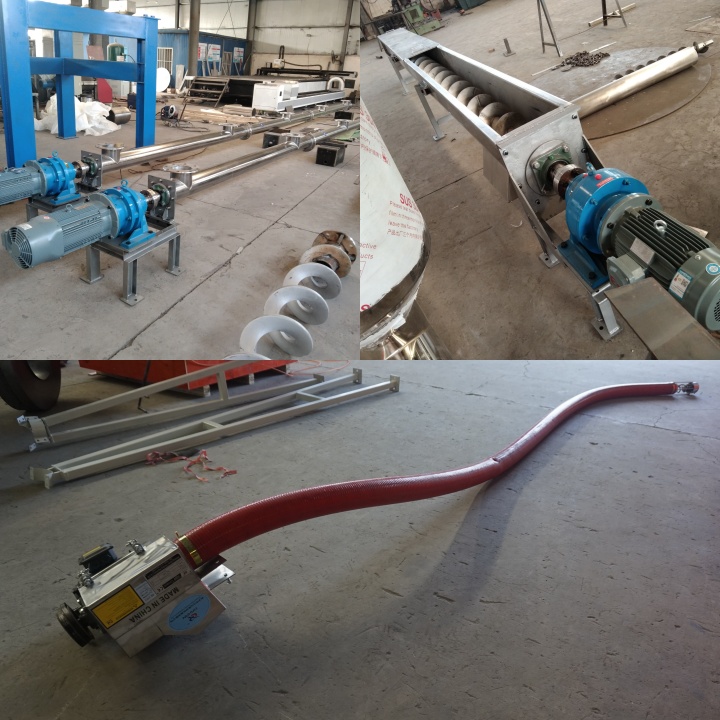
What are the advantages of Poultry Screw Conveyor?
Poultry Screw Conveyor, especially flexible screw conveyors, have significant advantages over other feed conveying methods. They are an integral part of poultry farms, mainly in the following aspects:
Automation: Screw conveyors realize the automation of feed delivery. They can quickly and continuously transport large amounts of feed from the silo to various feeding lines or feeding trays, ensuring the timely supply of feed, especially in large or large-scale farms.
Flexibility and adaptability: The pipes of flexible screw conveyors can be bent and adjusted according to the layout and needs of the chicken house, easily bypassing obstacles and achieving multi-point feeding.
Reduced feed waste and contamination: Screw conveyors usually use a closed pipe system, which can effectively prevent feed from being spilled, damp or contaminated by external pollutants (such as dust, birds, rodents) during transportation. This not only reduces feed waste, but also ensures the hygienic quality of feed, which is crucial to the health of poultry.
Easy maintenance and durability: High-quality screw conveyors are usually made of wear-resistant materials, with relatively simple structures and low failure rates. Daily maintenance mainly focuses on cleaning and regular inspections, which are easy to carry out, greatly reducing maintenance costs and downtime, and ensuring the continuity of production.
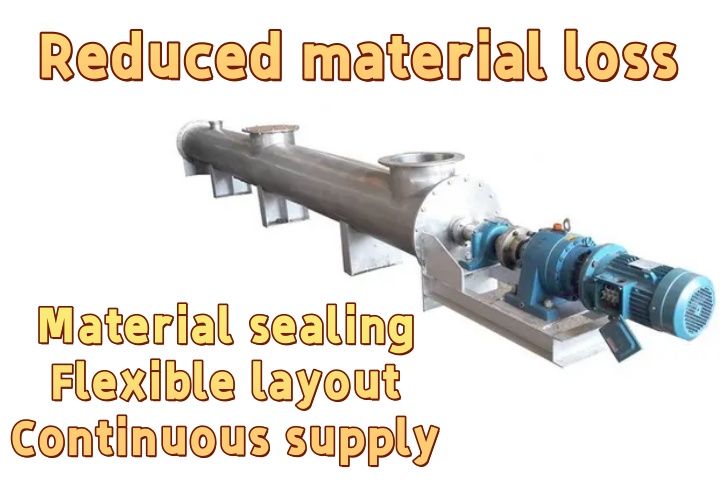
Parameters of Poultry Screw Conveyor
| Model |
Diameter (mm) |
Pitch (mm) |
Rotating speed (r/min) |
Capacity (m³/h) |
Rotating speed (r/min) |
Capacity (m³/h) |
Rotating speed (r/min) |
Capacity (m³/h) |
Rotating speed (r/min) |
Capacity (m³/h) |
|
| Small | 100 | 100 | 100 | 140 | 2.2 | 112 | 1.7 | 90 | 1.4 | 71 | 1.1 |
| 125 | 125 | 125 | 125 | 3.8 | 100 | 3 | 80 | 2.4 | 63 | 1.9 | |
| 160 | 160 | 160 | 112 | 7.1 | 90 | 5.7 | 71 | 4.5 | 56 | 3.6 | |
| 200 | 200 | 200 | 100 | 12.4 | 80 | 9.9 | 63 | 7.8 | 50 | 6.2 | |
| Small | 250 | 250 | 250 | 90 | 21.8 | 71 | 17.2 | 56 | 13.6 | 45 | 10.9 |
| 315 | 315 | 315 | 80 | 38.8 | 63 | 30.5 | 50 | 24.2 | 40 | 13.4 | |
| 400 | 400 | 355 | 71 | 62.5 | 56 | 49.3 | 45 | 38.6 | 36 | 31.7 | |
| Large | 500 | 500 | 400 | 63 | 97.7 | 50 | 77.6 | 40 | 62 | 32 | 49.6 |
| 630 | 630 | 450 | 50 | 138.5 | 40 | 110.8 | 32 | 88.6 | 25 | 69.3 | |
| 800 | 800 | 500 | 40 | 198.5 | 32 | 158.8 | 25 | 124.1 | 20 | 99.3 | |
What are the applications of Poultry Screw Conveyor?
Poultry Screw Conveyor plays a vital role in poultry farming and related industries. Its application range is very wide, mainly reflected in the following aspects:
Feed transportation and distribution
From silo to chicken house: Poultry Screw Conveyor transports feed from large outdoor silos to various feed lines or feeders in the chicken house. In particular, flexible screw conveyors, because their pipes can be bent, can easily adapt to the complex layout of the chicken house and realize feed supply for multiple feeding lines.
Feed distribution in the chicken house: Inside the chicken house, the screw conveyor (usually a flexible screw) distributes the feed evenly to each feeding tray or trough along the feed line to ensure that each poultry can get enough feed. This is crucial to improve feed conversion rate and ensure uniform growth of poultry.
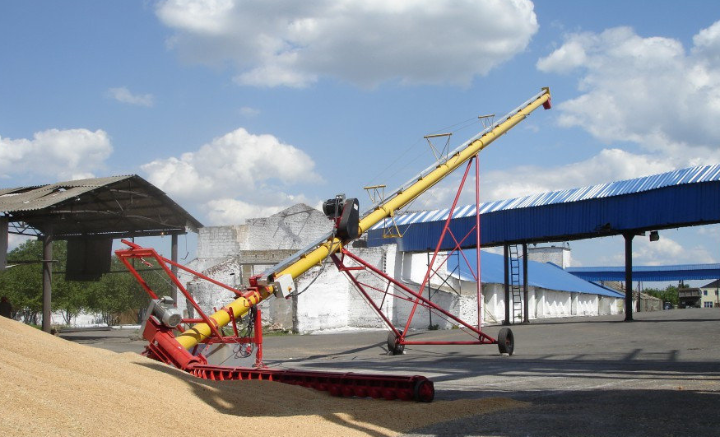
Manure Handling and Conveying
In addition to feed, Poultry Screw Conveyor is also commonly used to handle manure generated during poultry farming.
Manure Removal: Poultry Screw Conveyor can transport chicken manure from the inside of the chicken house to the manure collection area or processing equipment. In particular, some shaftless screw conveyors are less likely to be blocked by sticky or entangled manure because they have no central shaft.
Manure Drying and Composting: In manure treatment facilities, screw conveyors can be used to transport semi-dry or dry manure from one processing stage to the next, such as from a dryer to a composting area.
Litter and By-product Handling
Litter Transportation: In chicken houses where litter needs to be replaced, Poultry Screw Conveyor can be used to transport new litter (such as rice husks, wood chips, etc.) into the chicken house, or to transport old discarded litter out.
Slaughter by-product processing: In poultry slaughter and processing plants, Poultry Screw Conveyor is also widely used to convey various by-products, such as feathers, viscera, bones, etc., and transport them to rendering plants for further processing and conversion into valuable products such as animal protein powder. Since these materials may be sticky or corrosive, specially designed screw conveyors made of stainless steel or wear-resistant materials are usually used.
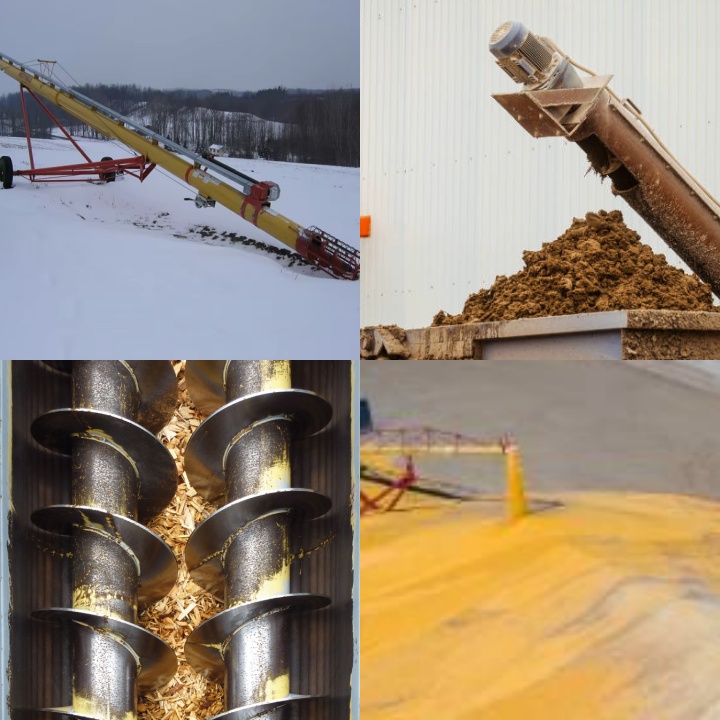
Poultry Screw Conveyor is a tool used in existing farming processes to achieve mechanized transfer of materials such as feed, bedding or manure. Its design and operation are aimed at meeting the actual needs of specific conveying tasks and helping farming operations maintain continuity. In terms of daily maintenance, regular inspections and cleaning are usually required to ensure that it functions properly. Selecting a suitable Poultry Screw Conveyor usually requires specific parameters based on the physical properties of the material, the actual conditions of the conveying route, and the carrying capacity of the equipment.
